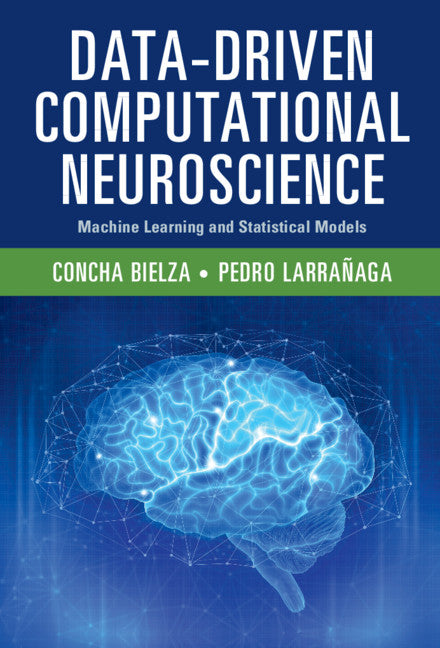Freshly Printed - allow 3 days lead
Couldn't load pickup availability
Data-Driven Computational Neuroscience
Machine Learning and Statistical Models
Trains researchers and graduate students in state-of-the-art statistical and machine learning methods to build models with real-world data.
Concha Bielza (Author), Pedro Larrañaga (Author)
9781108493703, Cambridge University Press
Hardback, published 26 November 2020
708 pages, 210 b/w illus. 40 colour illus.
25.9 x 18.5 x 4.3 cm, 1.49 kg
'In our world of Big Brain Initiatives and Big Data, this encompassing book provides the much-needed bridge between these two 'Bigs'. Data-driven computational and statistical methods are admirably presented and exemplified, providing new insights on fundamental challenges such as classifying neurons into types, uncovering the neuronal code and unveiling principles of brain-connectivity. This book is a must.' Idan Segev, The Edmond and Lily Safra Centre for Brain Sciences, The Hebrew University of Jerusalem
Data-driven computational neuroscience facilitates the transformation of data into insights into the structure and functions of the brain. This introduction for researchers and graduate students is the first in-depth, comprehensive treatment of statistical and machine learning methods for neuroscience. The methods are demonstrated through case studies of real problems to empower readers to build their own solutions. The book covers a wide variety of methods, including supervised classification with non-probabilistic models (nearest-neighbors, classification trees, rule induction, artificial neural networks and support vector machines) and probabilistic models (discriminant analysis, logistic regression and Bayesian network classifiers), meta-classifiers, multi-dimensional classifiers and feature subset selection methods. Other parts of the book are devoted to association discovery with probabilistic graphical models (Bayesian networks and Markov networks) and spatial statistics with point processes (complete spatial randomness and cluster, regular and Gibbs processes). Cellular, structural, functional, medical and behavioral neuroscience levels are considered.
Part I. Introduction
Section 1. Computational Neuroscience
Part II. Statistics
Section 2. Exploratory Data Analysis
Section 3. Probability Theory and Random Variables
Section 4. Probabilistic Interference
Part III. Supervised pattern recognition
Section 5. Performance Evaluation
Section 6. Feature subset selection
Section 7. Non-probabilistic classifiers
Section 8. Probabilistic classifiers
Section 9. Metaclassifiers
Section 10. Multi-dimensional classifiers
Part IV. Unsupervised pattern recognition
Section 11. Non-probabilistic clustering
Section 12. Probabilistic clustering
Part V. Probabilistic graphical models
Section 13. Bayesian networks
Section 14. Markov networks
Part VI. Spatial statistics
Section 15. Spatial statistics.
Subject Areas: Signal processing [UYS], Neural networks & fuzzy systems [UYQN], Machine learning [UYQM], Neurosciences [PSAN], Cognition & cognitive psychology [JMR]


